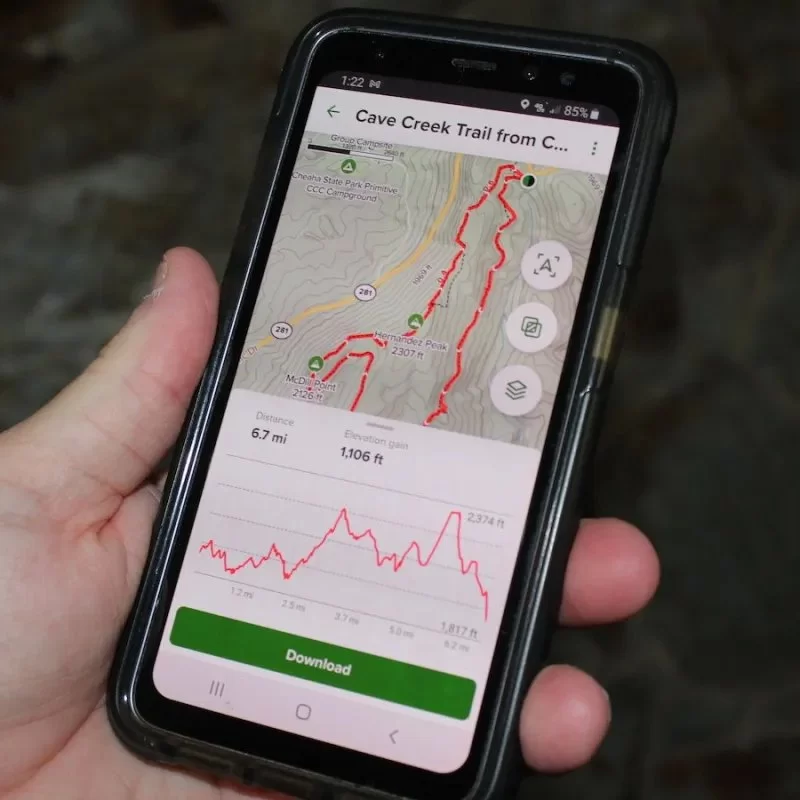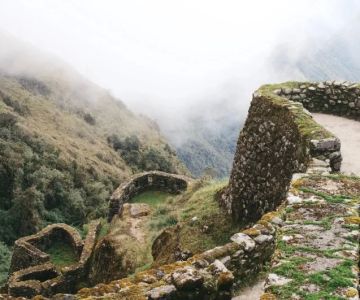
The Best Apps for Finding Accessible Hiking Trails in the US
- Why Accessible Hiking Trails Matter
- Top Apps for Finding Accessible Hiking Trails
- Features to Look for in Hiking Apps
- Real-Life Stories: Exploring Accessible Trails
- How Refined Travel Can Help You Plan Your Hiking Adventure
Why Accessible Hiking Trails Matter
Accessible hiking trails are essential for individuals with disabilities, mobility challenges, or those who simply seek an easier way to enjoy nature. These trails provide an opportunity for everyone, regardless of physical ability, to explore the great outdoors and experience the beauty of the natural world. As hiking becomes more popular, it’s important to ensure that nature is inclusive and available to all. Accessible trails typically feature smooth surfaces, gentle slopes, and other features that make them easy to navigate, ensuring a positive and rewarding hiking experience for everyone.
Top Apps for Finding Accessible Hiking Trails
With the rise of technology, several apps are now available to help hikers find accessible trails across the US. These apps provide detailed maps, trail descriptions, accessibility features, and even user reviews to help you make informed decisions. Below are some of the best apps for finding accessible hiking trails:
1. AllTrails
AllTrails is one of the most popular hiking apps, offering a wide range of trails, including those that are wheelchair accessible. You can filter trail searches by accessibility, difficulty, length, and other features. The app provides detailed maps, user ratings, and information on the level of difficulty, making it easy to find trails suitable for different abilities. With over 100,000 trails listed, AllTrails is a great resource for both beginner and experienced hikers.
2. AccessTrail
AccessTrail is an app dedicated entirely to finding accessible hiking trails. It is a unique platform that focuses on providing information for those with mobility challenges. AccessTrail includes user-generated content about the condition and accessibility of trails, ensuring the information is as up-to-date as possible. This app is perfect for anyone looking for detailed accessibility information, including trail width, surface types, and elevation changes.
3. Hike Finder
Hike Finder is a free app that allows users to discover trails based on various parameters, including accessibility. The app features trails that are marked as wheelchair accessible and provides information on terrain type, distance, and user ratings. It is a great tool for individuals with mobility issues who want to explore local and national parks with ease.
4. TrailLink
TrailLink is a comprehensive app that helps hikers find trails across the US, including accessible options. It offers detailed maps, descriptions, and user reviews to ensure you have all the necessary information to plan your trip. With its focus on rail-trails, many of the paths featured are smooth, flat, and ideal for those with mobility challenges.
5. Wheelchair Accessible Trails
Wheelchair Accessible Trails is a niche app that provides a list of wheelchair-friendly hiking trails across the United States. It includes features like trail surface, length, and any special accommodations available for those with disabilities. This app is invaluable for those specifically looking for accessible hiking options.
Features to Look for in Hiking Apps
When selecting an app to find accessible hiking trails, certain features are crucial to ensure you have the best experience possible. Look for apps that include:
1. Accessibility Filters
Many hiking apps offer filters that let you search specifically for wheelchair-accessible, stroller-friendly, or easy-to-navigate trails. These filters can be essential for narrowing down options that meet your specific needs.
2. Trail Reviews and Ratings
User reviews are invaluable for learning about the actual conditions of the trails. Look for apps that feature reviews from other hikers, especially those who have used the trail with similar mobility concerns. Reviews will provide insights on trail surface conditions, steepness, and other important details.
3. Detailed Maps and GPS
Having access to detailed maps and GPS navigation is essential when exploring new trails. Apps that offer offline maps can be particularly useful if you’re hiking in areas without cellular service.
4. Photos and Trail Conditions
Photos give you a visual idea of the trail, and apps that provide real-time updates on trail conditions are ideal. Look for apps that include photos from hikers and trail condition updates, especially after weather events that might affect accessibility.
Real-Life Stories: Exploring Accessible Trails
One of the best ways to truly understand the value of accessible hiking trails is through real-life experiences. Many hikers have shared their stories about how accessible trails have made their outdoor adventures possible. Take Sarah, for example, who had previously felt discouraged from hiking due to mobility issues. With the help of the AllTrails app, she discovered several accessible trails in her area. Now, Sarah enjoys weekend hikes with her family, knowing that the trails are designed with her needs in mind.
Another story comes from Jason, an avid hiker who recently used the AccessTrail app to explore a new park. The app’s detailed descriptions of trail accessibility features allowed him to confidently choose a trail that was both scenic and easy to navigate for his elderly mother, who uses a walker. Jason’s story highlights the importance of apps that provide clear and reliable information on accessibility.
How Refined Travel Can Help You Plan Your Hiking Adventure
If you’re looking to explore accessible hiking trails in the US, Refined Travel can help you plan your perfect adventure. From helping you find the best apps for locating accessible trails to offering expert advice on trail conditions and suitable accommodations, we’ve got you covered. Visit our website for more information on accessible hiking tours and how we can assist you with your travel needs.







 Golden Acre Mobile Home Park4.0 (29 reviews)
Golden Acre Mobile Home Park4.0 (29 reviews) Pleasant Hill Lake Park4.0 (201 reviews)
Pleasant Hill Lake Park4.0 (201 reviews) Canandaigua3.0 (3 reviews)
Canandaigua3.0 (3 reviews) Camp Seven Lake Campground4.0 (63 reviews)
Camp Seven Lake Campground4.0 (63 reviews) Tomoko Trailer Court l3.0 (16 reviews)
Tomoko Trailer Court l3.0 (16 reviews) Buck's Crossing RV Sales & Resort4.0 (37 reviews)
Buck's Crossing RV Sales & Resort4.0 (37 reviews) Exclusive Travel Packages for First-Class Travelers: A Guide to Luxury Vacations
Exclusive Travel Packages for First-Class Travelers: A Guide to Luxury Vacations Refined Travel Experiences in Southeast Asia: Explore Luxury & Unique Destinations
Refined Travel Experiences in Southeast Asia: Explore Luxury & Unique Destinations How to Make the Most of Luxury Vacation Deals: Expert Tips for Savvy Travelers
How to Make the Most of Luxury Vacation Deals: Expert Tips for Savvy Travelers How to Enjoy a Refined Travel Experience in the Mountains
How to Enjoy a Refined Travel Experience in the Mountains Refined Travel Itineraries for Art and Culture Lovers: Explore the World of Art and History
Refined Travel Itineraries for Art and Culture Lovers: Explore the World of Art and History Most Luxurious Destinations for Honeymooners: Top Spots for Romance and Luxury
Most Luxurious Destinations for Honeymooners: Top Spots for Romance and Luxury